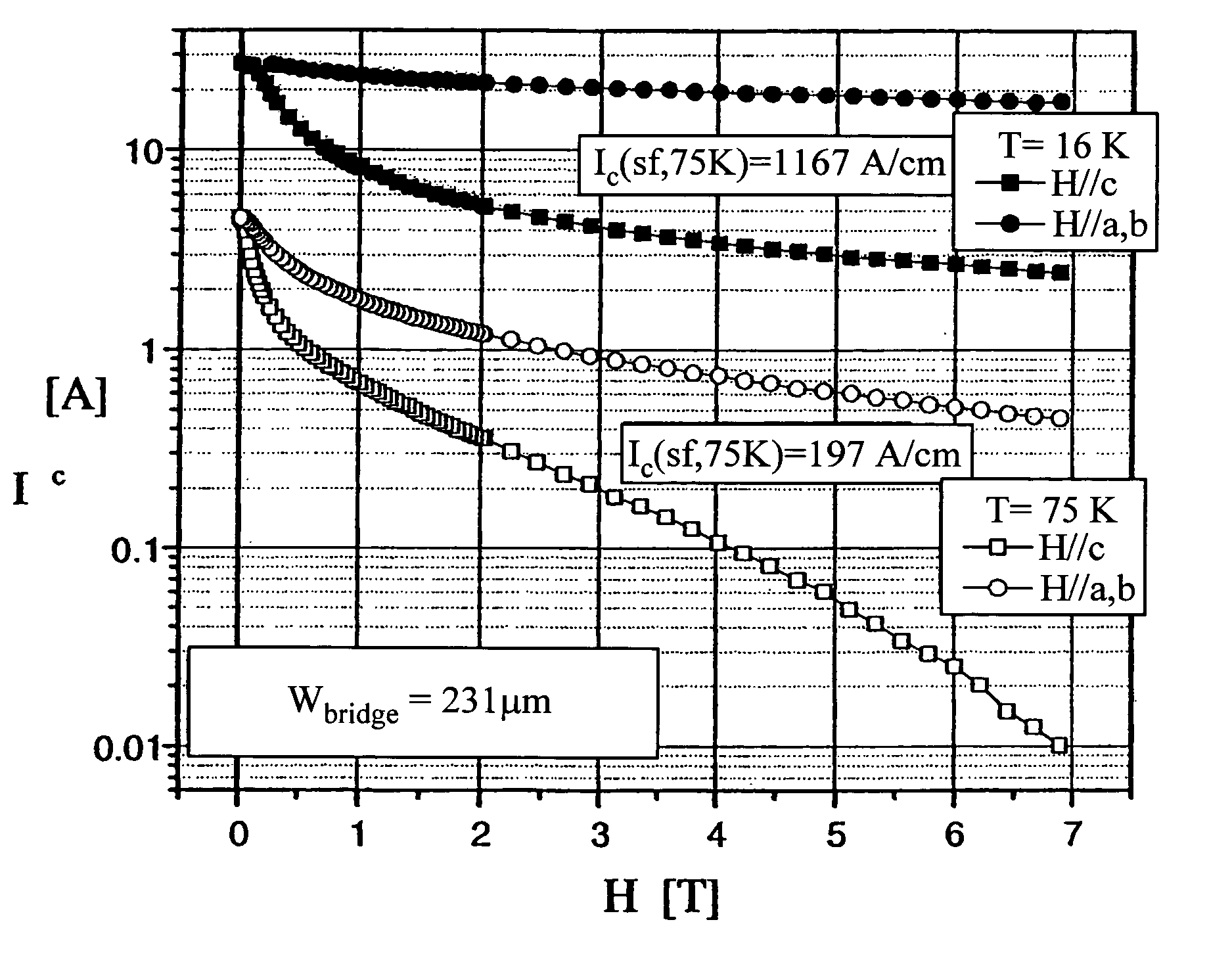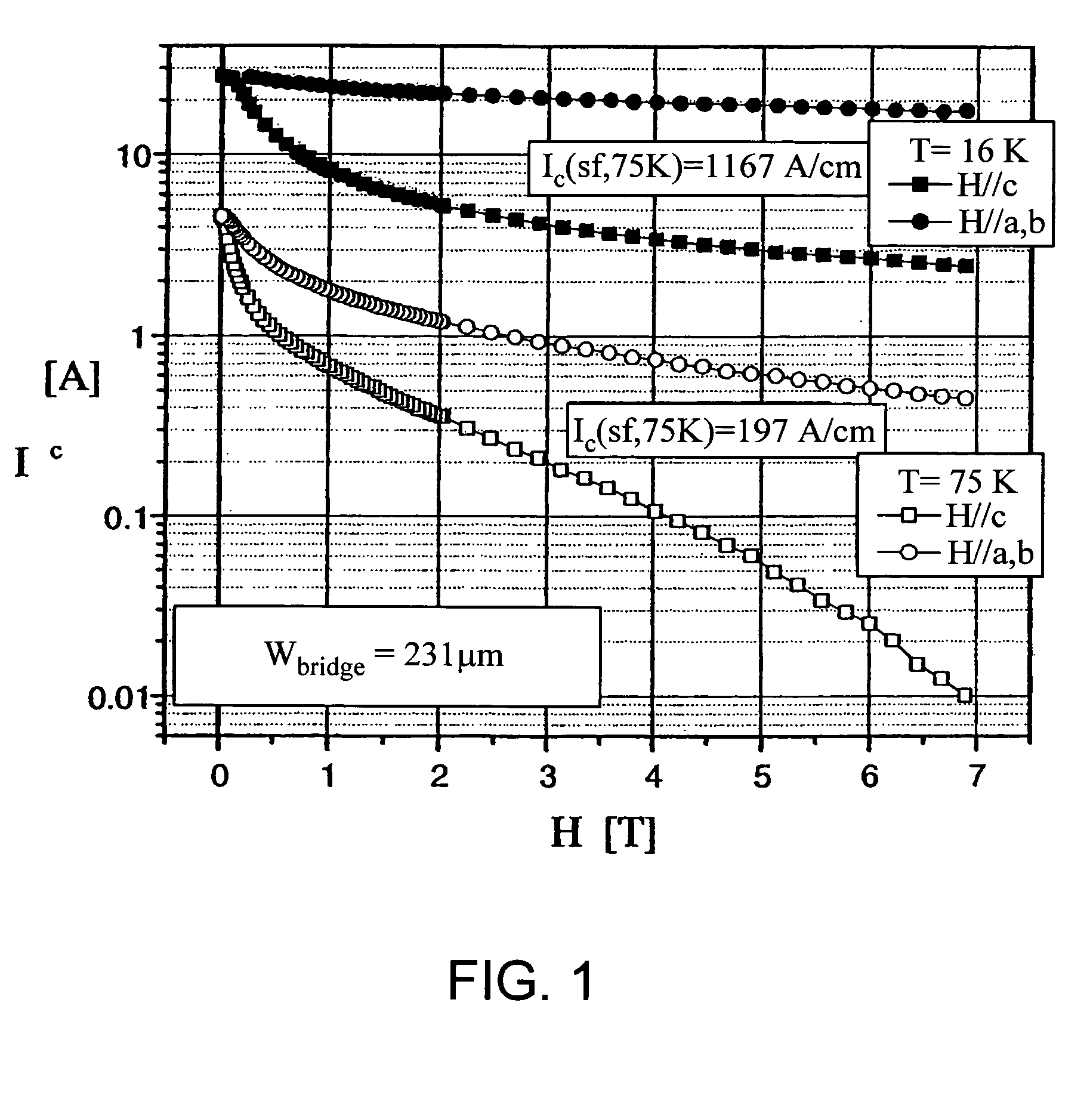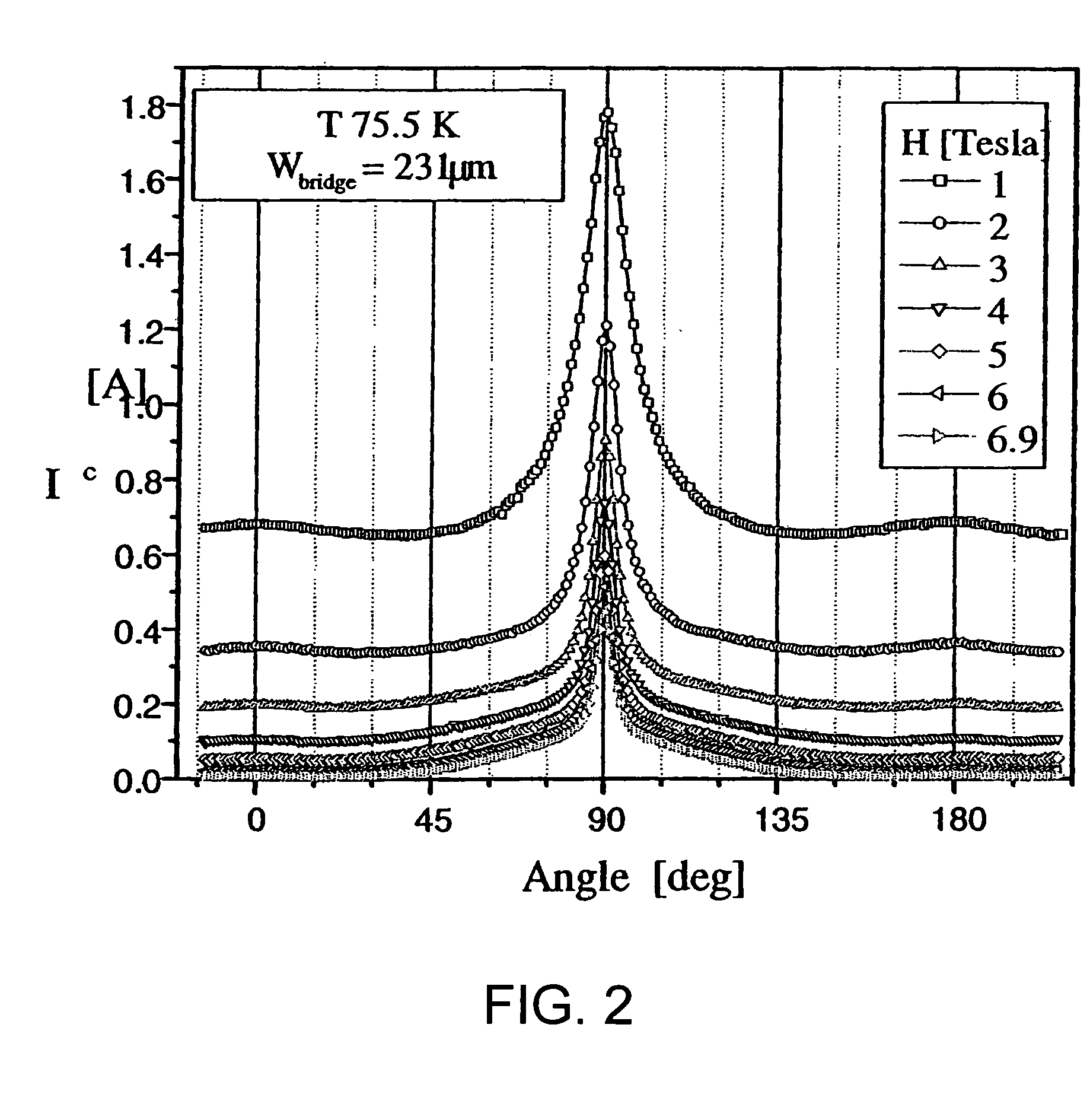Oxide films with nanodot flux pinning centers
a technology of nanodot and flux, which is applied in the direction of metal/metal-oxide/metal-hydroxide catalysts, superconductor devices, physical/chemical process catalysts, etc., can solve the problems of reducing the useful level of defects, and attractive nanometer-sized defects in the pinning of flux lines. achieve the effect of simple and versatil
- Summary
- Abstract
- Description
- Claims
- Application Information
AI Technical Summary
Benefits of technology
Problems solved by technology
Method used
Image
Examples
example 1
Preparation of Y123 Film
[0126] A comparative film of Y123 without pinning sites was prepared.
[0127] A YBCO precursor solution was prepared by dissolving about 0.83 grams of Y(CF3CO2)3, about 1.60 grams of Ba(CF3CO2)2 and about 1.28 grams of CU(C2H5CO2)2 in about 4.85 ml. of methanol (CH3OH) and about 0.15 ml of propionic acid (C2H6CO2). The final volume of the solution was adjusted to about 5 ml with methanol.
[0128] The precursor solution was deposited by a slot die coating technique on a length (20 cm to 10 meter) of 1 cm wide biaxially textured oxide buffered metallic substrate with the structure Ni(5 at %)W / Y2O3 / YSZ / CeO2. A sufficient quantity of precursor solution was deposited to produce about a 0.8 μm thick YBa2Cu3O7-x film.
[0129] The coated sample was decomposed to an intermediate metal oxyfluoride film by heating, in a 2.25″ diameter tube furnace, from room temperature to about 200° C. at a rate of about 15° C. per minute, then from about 200° C. to about 250 C at a rate...
example 2
Preparation of Y123 Film with Excess Yttrium
[0132] A Y123 film with yttrium-containing nanodots or nanoparticles was prepared.
[0133] A YBCO precursor solution was prepared by dissolving about 0.98 grams of Y(CF3CO2)3, about 1.60 grams of Ba(CF3CO2)2, about 1.28 grams of Cu(C2H5CO2)2 and about 0.025 grams of Ce(CH3CO2)3 in about 4.85 ml. of methanol (CH3OH) and about 0.15 ml of propionic acid (C2H6CO2). The final volume of the solution was adjusted to about 5 ml with methanol.
[0134] The precursor solution was deposited by a slot die coating technique on a length (20 cm to 10 meter) of 1 cm wide biaxially textured oxide buffered metallic substrate with the structure Ni(5 at %)W / Y2O3 / YSZ / CeO2. A sufficient quantity of precursor solution was deposited to produce about a 0.8 μm thick YBa2Cu3O7-x (Y123) film.
[0135] The coated sample was decomposed to an intermediate metal oxyfluoride film by heating, in a 2.25″ diameter tube furnace, from room temperature to about 200° C. at a rate of...
example 3
Preparation of Y123 Film containing BaCeO3
[0138] A Y123 film with BaCeO3-containing nanodots or nanoparticles was prepared.
[0139] A YBCO precursor solution was prepared by dissolving about 0.83 grams of Y(CF3CO2)3, about 1.68 grams of Ba(CF3CO2)2, about 1.28 grams of Cu(C2H5CO2)2 and about 0.025 grams of Ce(CH3CO2)3 in about 4.85 ml. of methanol (CH3OH) and about 0.15 ml of propionic acid (C2H6CO2). The final volume of the solution was adjusted to about 5 ml with methanol.
[0140] The precursor was coated and decomposed, processed and coated with Ag as described in Example 1. The resulting film and was about 0.8 micron thick. The x-ray diffraction pattern of the final film (FIG. 7) showed the presence of was (001) textured YBa2Cu3O7-x and BaCeO3. The critical current of the final film was measured by four probe method under different magnetic field at 77K and 27K, respectively. The ratio of the critical current at 27K in a 1 T field (perpendicular to the tape) to the critical curre...
PUM
| Property | Measurement | Unit |
|---|---|---|
| temperature | aaaaa | aaaaa |
| temperature | aaaaa | aaaaa |
| pressure | aaaaa | aaaaa |
Abstract
Description
Claims
Application Information
 Login to View More
Login to View More - R&D
- Intellectual Property
- Life Sciences
- Materials
- Tech Scout
- Unparalleled Data Quality
- Higher Quality Content
- 60% Fewer Hallucinations
Browse by: Latest US Patents, China's latest patents, Technical Efficacy Thesaurus, Application Domain, Technology Topic, Popular Technical Reports.
© 2025 PatSnap. All rights reserved.Legal|Privacy policy|Modern Slavery Act Transparency Statement|Sitemap|About US| Contact US: help@patsnap.com



